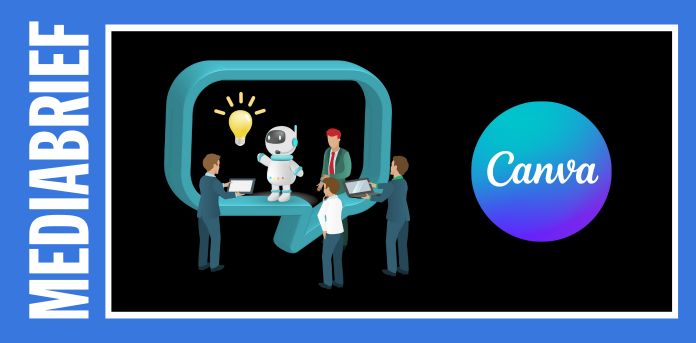Artificial Intelligence
AI adobe stock
As AI becomes increasingly sophisticated and ubiquitous, a critical question has emerged: Who bears the responsibility for ensuring its ethical development and implementation?
According to a recent survey by Prosper Insights & Analytics, about 37% of US adults agree AI solutions need human oversight. However, corporations and governments are engaging in a frustrating game of hot potato, each pointing fingers and shirking accountability. This lack of clear responsibility poses significant risks.
Prosper – Concern About Recent Developments in Artificial Intelligence
Prosper Insights & Analytics
On one hand, excessive government control and overregulation could stifle innovation, hindering AI’s progress and potential to solve complex problems. Conversely, unchecked corporate influence and a lack of proper oversight could result in an “AI Wild West,” where profit-driven motives supersede ethical considerations. This could result in biased algorithms, privacy breaches and the exacerbation of social inequalities.
Neither side can effectively address AI’s ethical challenges in isolation. To navigate this critical juncture, we must adopt a collaborative approach that bridges the divide between corporations and governments. Only by working together can we harness AI’s potential while ensuring that it serves the collective good of humanity.
The AI Ethics Tug-of-War
Proponents of corporate responsibility argue that companies developing AI technologies are best positioned to address ethical concerns. They possess the technical expertise, resources, and intimate understanding of their AI systems necessary to identify and mitigate potential risks.
Moreover, corporations have a vested interest in maintaining public trust and avoiding reputational damage, which can serve as a powerful incentive to prioritize ethical considerations. By embedding AI ethics into their governance structures, corporations can foster a culture of responsible innovation and demonstrate their commitment to societal well-being.
On the other hand, advocates for government regulation contend that AI’s far-reaching societal implications necessitate the involvement of elected representatives and public institutions. Governments have the authority and responsibility to protect citizens’ rights, ensure public safety and promote the common good. Through the development of clear legal frameworks and regulatory oversight, governments can hold corporations accountable, prevent the abuse of AI technologies and ensure that the benefits of AI are distributed fairly across society. Government regulation can also provide a level playing field, avoiding a race to the bottom where ethical considerations are sacrificed for competitive advantage.
However, relying solely on either corporations or governments to address AI ethics comes with significant pitfalls. Corporations, driven by profit motives, may prioritize short-term gains over long-term societal impacts, leading to the development of AI systems that perpetuate biases, violate privacy, or exacerbate inequalities. Without proper oversight and accountability, corporate self-regulation can fall short of protecting the public interest.
Conversely, excessive government regulation can stifle innovation, slow down the pace of technological progress and hinder the competitiveness of AI industries. Overregulation may also fail to keep pace with the rapid advancements in AI, leading to outdated and ineffective policies.
The tug-of-war between corporate responsibility and government regulation highlights the need for a balanced and collaborative approach to AI ethics. Neither corporations nor governments can address this complex challenge alone, making a partnership between the two essentials. By leveraging the strengths of each entity and fostering open dialogue and cooperation, we can create a comprehensive framework for AI ethics that promotes innovation while safeguarding societal values and individual rights.
The Case for Collaborative AI Governance
By working together, corporations and governments can develop technologically advanced AI systems aligned with ethical principles and societal norms. This collaborative approach fosters trust among stakeholders, as it demonstrates a shared commitment to responsible AI development and helps to address concerns about the potential misuse of AI technologies.
Chris Heard, CEO of Olive Technologies and a renowned enterprise AI expert, emphasizes the urgency of collaboration in AI ethics: “The current AI ethics landscape is a high-stakes blame game, with corporations and governments pointing fingers while the technology races ahead unchecked. We need to stop this unproductive debate and recognize that ensuring the responsible development of AI is a shared obligation. Only by working hand-in-hand can we build an AI-driven future that benefits humanity as a whole.”
Successful collaborative initiatives in history serve as powerful examples of the potential for cooperation between corporations and governments, especially when facing existential threats. During the Cold War, the development and management of nuclear weapons required the government, private sector, and scientific community to join together to oversee the development, testing and regulation of nuclear technology.
The establishment of the Atomic Energy Commission (AEC) in 1946 advanced scientific understanding and implemented critical safeguards and protocols to manage a world-changing technology. This example shows that collaboration can help harness the benefits of groundbreaking tools while mitigating risks, an approach that is equally vital in building and regulating AI.
Similarly, in the automotive industry, collaborations between car manufacturers and government bodies have led to the establishment of safety standards, emissions regulations and incentives for the development of electric and autonomous vehicles. One well-known case is when the U.S. government recognized air pollution caused by vehicle emissions as a growing threat. In response, it enacted the Clean Air Act and worked with car manufacturers and research institutions to develop emissions control technologies. Collaboration can be incredibly powerful in driving innovation and adequately addressing societal concerns.
Collaborative AI governance can take various forms, such as the establishment of multi-stakeholder forums, the creation of industry-wide standards and best practices and the development of joint research initiatives. These collaborative efforts can help bridge the gap between the rapid pace of AI development and the need for effective governance by fostering open dialogue, shared learning, and mutual accountability.
Embedding AI Ethics in Corporate and Government Roles
While a truly effective approach to AI ethics requires a joint effort, corporations and the government can make meaningful strides in isolation, too. For example, corporations can guide the development and deployment of AI systems by establishing dedicated AI ethics boards, appointing chief ethics officers, and integrating ethical training and awareness programs throughout the organization.
Another approach could be to create an AI “supreme court” comprising of scientists, government officials and corporate developers. This body could provide impartial oversight, resolve ethical dilemmas, and guide responsible AI development. This solution ensures a balanced approach that incorporates diverse perspectives and expertise while fostering collaboration between key stakeholders in the AI ecosystem.
According to a preview of EY research, 13% of S&P 500 companies have instituted some form of a board-level technology committee. These committees have proven invaluable in effectively managing technology risks and steering the innovation and growth agenda fueled by technology. By making AI ethics a core component of corporate governance, companies can do their part to ensure that their AI initiatives align with societal values, mitigate potential risks, and maintain public trust.
Governments can develop clear, adaptable AI ethics frameworks that provide guidance and oversight for responsible AI development and use. These frameworks should be based on principles like transparency, accountability, fairness, and privacy protection while allowing flexibility for innovation. Establishing regulatory bodies, standards, certification programs and public-private partnerships ensures that governments are active players in the responsible deployment and development of this technology.
However, AI is a shared responsibility requiring urgent action and collaboration from all stakeholders. Let’s seize this moment — united in our commitment to the responsible development and governance of AI — and forge a path forward.





